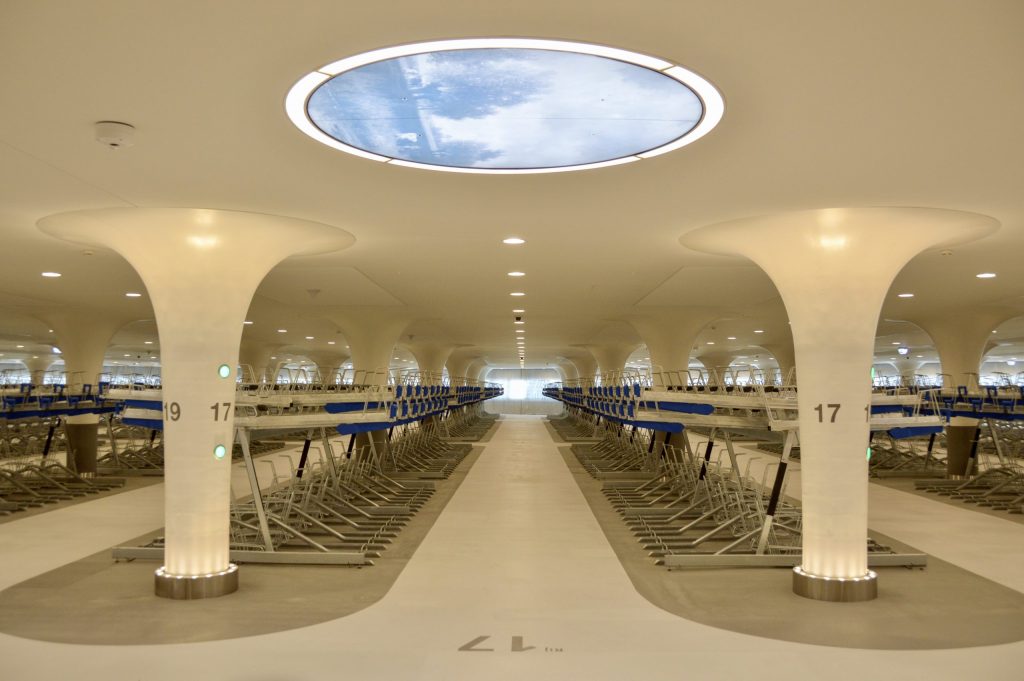Four years, €60 million (about $65 million), a lot of workforce, and smart planning is what it took to build Amsterdam Central Station’s newest project which is a massive underwater bicycle parking garage.
The structure has space for 6,300 personal bicycles and 700 more for bike shares to facilitate the first or last mile of rail journeys. Capacity will expand to 11,000 bicycles when a second garage opens in February. This makes it the largest bicycle parking facility in the city. The Stationsplein bicycle garage was built under the so-called ‘Open Harbourfront’.
There are more than 800,000 bicycles in the city, and less than 800,000 people. And more than a third of all trips are taken by bicycle, to the tune of more than 600,000 each day.
Since parking spaces for bikes were limited for the people in the Netherlands, the majority of whom preferred bikes over automobiles, this project has provided them with ample space and hassle-free parking spots not only underground but underwater as well.
“Without bicycle racks, the street is easier to keep clean, it is tidy, well-arranged, and safe,” read the city statement. “The opening of the new parking facilities marks the beginning of a new era, in which Amsterdam Central will be a bit like around 1900 again. Accessible and pleasant, without cars and bicycles parked everywhere and nowhere.”
On a journey to slowly but methodically transform personal automobiles into relics of a misguided past, it’s a usual business for Dutch cities. Their goal is to go back to a time when cities were built around the needs of cars, not people.
“Central station is one of the busiest places in Amsterdam,” Amsterdam municipality’s bike project manager, Pieter Visser, told the Guardian. “A lot of bikers use this precious public space to bike and park. The municipality chose to facilitate underground bike parking (in this case, underwater) to return the public space to pedestrians, tourists, and people with disabilities.”
It is now officially open to the public and for the first 24 hours, it is free as well.

